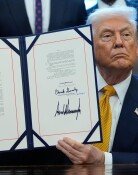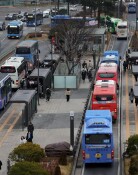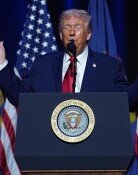[Editorial] City Project or Election Ploy?
[Editorial] City Project or Election Ploy?
Posted January. 12, 2006 03:01,
The government is set to launch a project to create participatory cities, one of its core missions to realize the balanced development of land in the latter half of its term.
The project revolves around categorizing cities nationwide into big, medium, and small cities, and transforming them into better places to live in with the participation of residents.
The ultimate goal is to develop the project into a nationwide campaign that can compare with the Saemaeul (New Community) Movement launched by the Park Chung-hee administration. A presidential committee will be created for the project, along with task force teams within local autonomous governments.
The idea is not that bad. But the projects efficiency is doubtful and negative fallout is feared in the process of the project. And given that the project will take tangible shape shortly before local elections in May, some are already saying that the project is aimed at the elections. We can take advantage of this project for the local elections next year, said President Roh last July, triggering controversy.
The project schedule also raises a question. The government is scheduled to release a blueprint for the project before the local elections, while the ruling Uri Party is supposed to find the legal grounds to provide assistance to the concerned cities. This reminds one of the presidents remark: We gained a lot from his presidential election pledge to build administrative cities.
There are a number of city development projects the Roh administration is considering or has launched: the Multi-functional Administrative City, the Innovation Cluster, the Innovation City, the Business City, the Free Economic Zone, and the Free International City. One cant even remember all the names of cities. And a staggering 20 trillion won has been poured into these projects. And additional 67 trillion won will be more invested by 2008.
Doesnt it make more sense for the government to bring existing projects to another level and create good cities to live in, instead of launching a whole new participatory city development project? Why does it need to kick off a nationwide campaign that is comparable with the Saemaeul movement? Who will pay for these new initiatives when profligate government spending has already caused a burden on taxpayers?
The project, especially when public participation has not been institutionalized, is highly likely to deteriorate into unseemly competition among local autonomous governments to secure more budget money from the central government, as was the case with existing balanced land development projects. And there is a high likelihood that it will spawn never-ending controversy over possible special treatment surrounding the selection of areas to be developed. And it also can be no more than a development project for demonstration effect, such as exchanging a thatched roof for a tile roof.
Before pushing ahead with the participatory city development project, the government should first listen to public opinion. If it only is keen on getting more votes in the upcoming elections, this idea will not only fail, but also cause political division. Koreans will see sooner than later what is behind the participatory city development project, which has been carefully orchestrated by the government and the ruling party.







